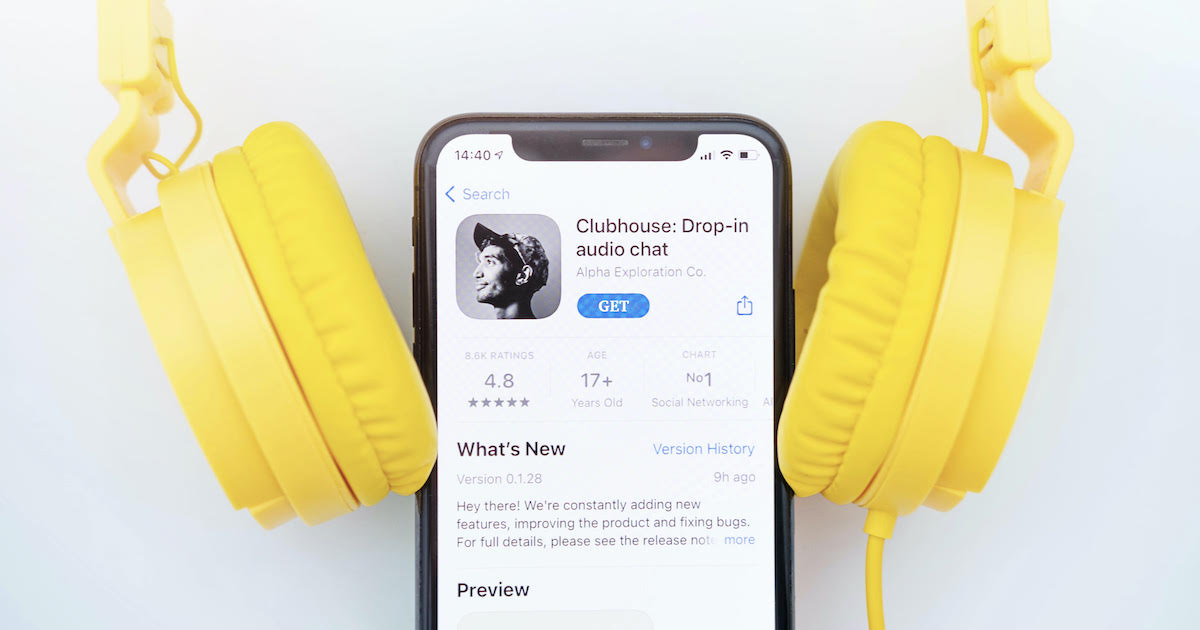Imagine combining a webinar, podcast, and your classic late 90s online chat room. That’s Clubhouse. Except, it’s all audio-based.
Clubhouse brings a whole new social experience by connecting diverse voices and communities around the world, enabling authentic conversations around niche topics people love. Oftentimes, these conversations and debates can go on for hours.
Want to hear Elon Musk talk about colonizing Mars and his favorite memes? Or Mark Zuckerberg talk about AR and VR in remote work? Join Clubhouse and pay attention, because unlike podcasts these conversations aren’t replayable. Blink, and you’ll miss it.
If you’ve been curious about the hype around Clubhouse, you’ve come to the right place. Here, we have mapped out everything you need to know about Clubhouse.
Table of Contents
What Is Clubhouse?
The Clubhouse app is a voice-only social platform that allows users to create rooms and start engaging conversations.
With no cameras, there’s no eye contact. No worries about how you look or what you wear. All you can do is listen or speak.
Audience members can come in and out of rooms without any interruption. They can participate in conversations by simply raising their hands, as long as the moderators accept or send private invitations to speak.
Keep in mind that the Clubhouse app is invite-only. It was not their intention to promote exclusivity, but in order to build a new social ecosystem with a small team, it does take time.
How to Download the Clubhouse App
So far, the Clubhouse App is only available for iOS, so you can download the app in the App Store.
For all Android users, don’t feel left out. Knowing that there are more Android users worldwide – 71% of Android users and 27% iOS users – Clubhouse developers are focusing on the Beta version to build the app slowly for everyone.
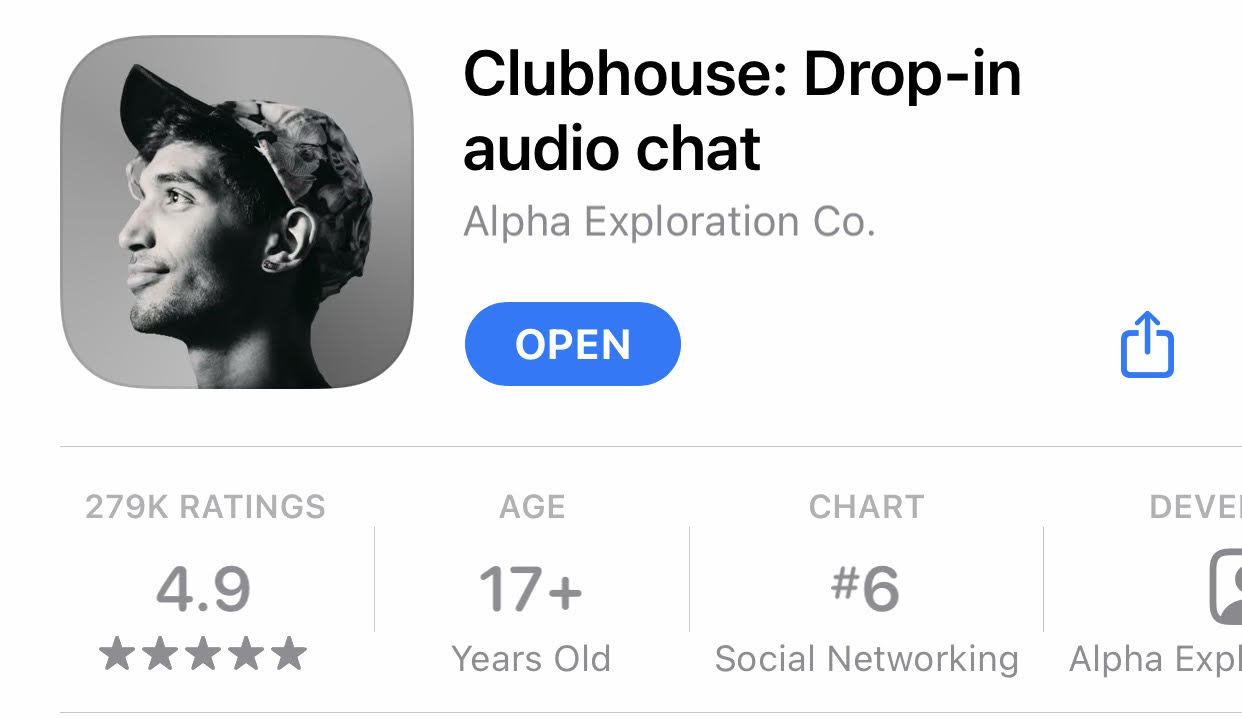
How to Get an Invite on Clubhouse
You’ve downloaded the app and reserved your username. Now, it’s time to wait.
Each user gets 2-4 invites. Here are some ideas on how to get an invite:
Simply ask nicely. Ask a friend, family member, or coworker; you’d be surprised how many invites they have left.
Reach out to online communities. Many clubs start from Facebook groups. Not only are Facebook groups a great place for people to connect, it’s also a good place to increase your chances of getting a Clubhouse invite. Write a post on the wall and see who will reply!
Find invite threads in Facebook and Linkedin groups. Use #clubhouse and #payitforward to find Clubhouse invite threads. Great communicators will know how to facilitate these threads to make sure everyone gets an invite fairly. It starts with the author of the post sharing their Clubhouse invite, and then invitees pass along their invite to another member in the thread. Here’s a LinkedIn example post:
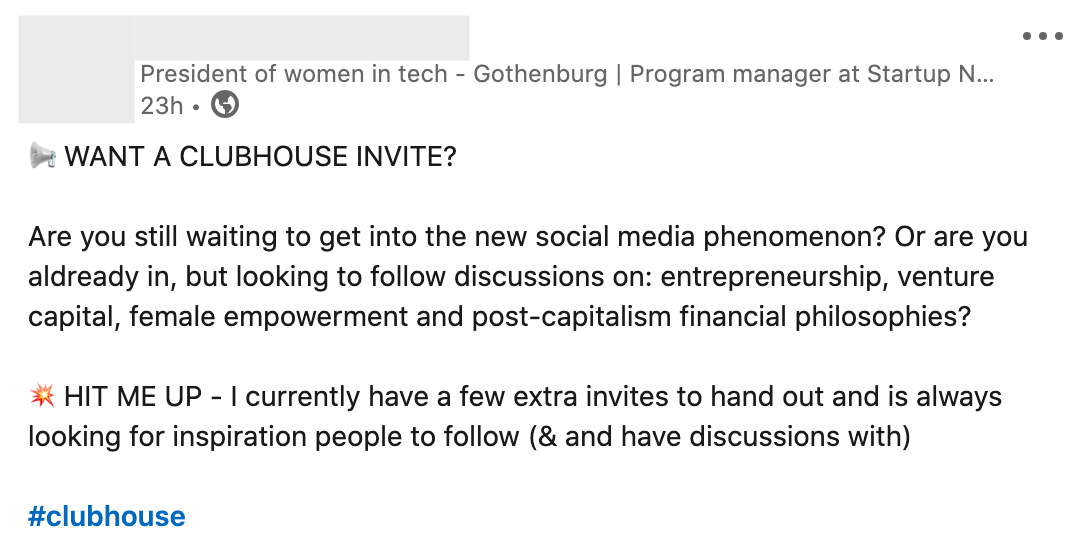

Creating a Clubhouse invite thread can be a great way to interact with your LinkedIn network. You can also use this strategy for potential lead generation on LinkedIn, or you can even connect with them on Clubhouse.
Some people have bought Clubhouse invites from other users. This is a less favorable route because Clubhouse does not charge its users invites. Please check out Clubhouse’s Community Guidelines and Terms of Service before any invite transaction. Warning: Be cautious of scammers trying to “sell” invites in any public group, especially on Reddit threads. Always double (or triple) check your sources.
Got your Clubhouse invite? Great
Here’s what you need to do next:
You will receive a text notification stating that someone has “moved you to the front of the waitlist” with a link
Click on the link in the text
Poof! You’re now in Clubhouse
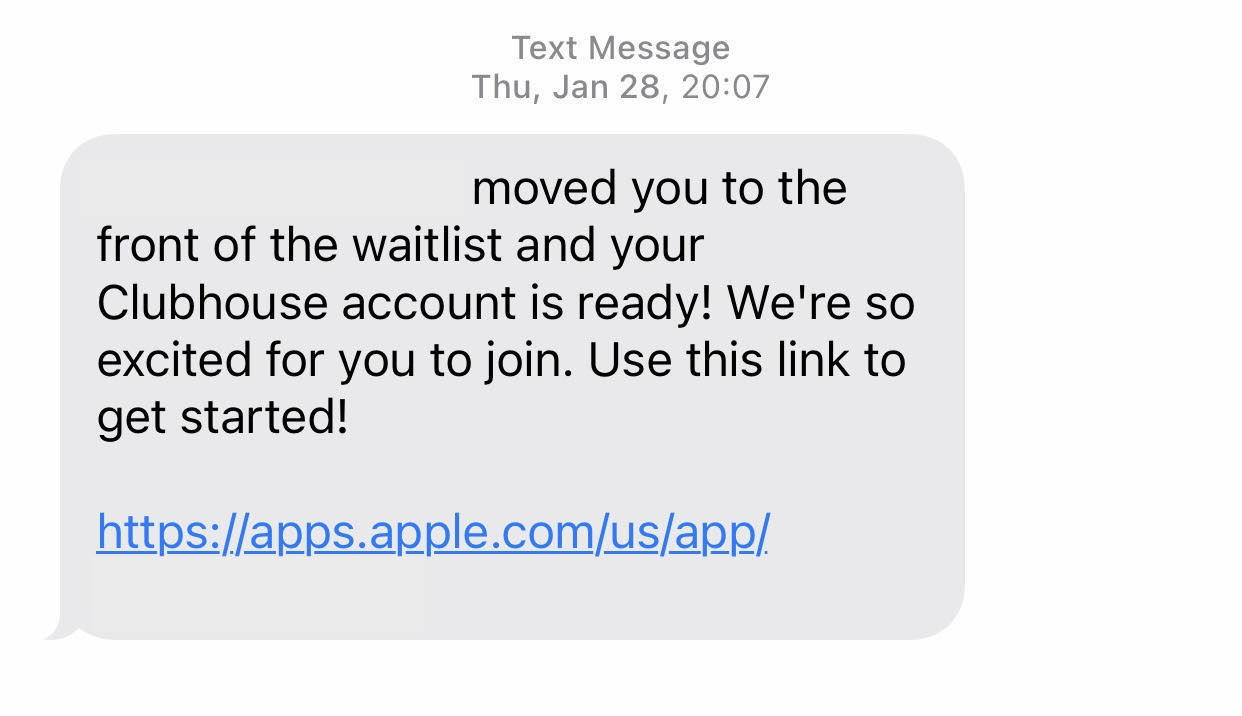
Clubhouse Language You Need to Know
Getting familiar with a new platform can be overwhelming, especially if there’s new lingo. Here are some terms to get you in the loop:
Hallway – When you open the app, this is the default area where you can see rooms from your followers and the people you follow. As you scroll to the bottom, click on “🌍 Explore” to load more rooms.
Stage – When you enter a room, the top area is where you can see all the moderators and speakers at the top part of the room.
Audience Members – In a room, members listed under the Stage are listeners and they are always muted. They have the ability to leave the room silently or raise their hand to speak. Tip: If you hold down on the Raise Your Hand button, you can change the skin color of the hand.

Moderator – Users with a green and white asterisk are the moderators of the room. They have complete control of the Stage. They can allow or invite audience members to the Stage to speak. Moderators can also mute speakers as well.
PTR “Pull to Refresh” – When a moderator says “PTR,” pull down the screen to refresh the room. At this moment, you will see new profile pictures of any member in that room. This is a clever way to give some visuals to help support a conversation or point.
Blinking Mute Mic – Not really a term, but this is clapping. When you’re in a room, you’ll notice speakers on the Stage blinking their Mute Mic. If you’re a speaker or moderator, use your muted mic to applaud a discussion or an idea.
Ping – Invite a user into a room you’re listening to. You can click on the “+” button right next to the Raising Your Hand button.
Nomination Tree – Since this app is currently invite-only, you can track who invited who by clicking on “Nominated by...” in a user’s bio. Go and see who’s on your nomination tree!
Now that you’re up to date, it’s time to work on your brand and content on Clubhouse. An experienced social media marketer will have an engaging content strategy to raise more brand awareness. It’s essential to know exactly what your audience loves about your brand.
How to Raise Awareness About Your Brand on Clubhouse
Clubhouse is a new social channel to gain more organic traffic and build awareness for your brand.
The best way to approach Clubhouse is to have a good content marketing strategy on social. You will need to define your marketing objectives and know exactly what your audience is interested in.
Here’s how to build your content strategy on Clubhouse:
Find clubs to follow. If you know your target audience, you know what interests them. If you don’t, here are five ways to define your target audience on social.
Create an engaging bio. Your bio is the place to show who you are and promote your brand. More importantly, your profile needs to be searchable in Clubhouse.
Start a club! What better way to engage with your target audience than to speak to them directly. Tip: Create a Social room, so the people you follow will see your club in their Hallway right away.
How to Create a Searchable Bio on Clubhouse
By this time, you’ve probably explored the platform, jumped through rooms, and followed some interesting clubs. Now, you’re ready to create a club on your own.
Before you jump into club creation, you need to create an engaging bio in order for you and your clubs to be searchable in Clubhouse.
Here are six tips on how to structure your bio:
1. Your top three lines are the most important. This is where you can put your creative hooks and describe who you are. When you’re in a room – whether you’re an audience member, speaker, or moderator – listeners in that room can see the first three lines of your bio in a mini-profile preview. That way listeners can see who you are without leaving the discussion.
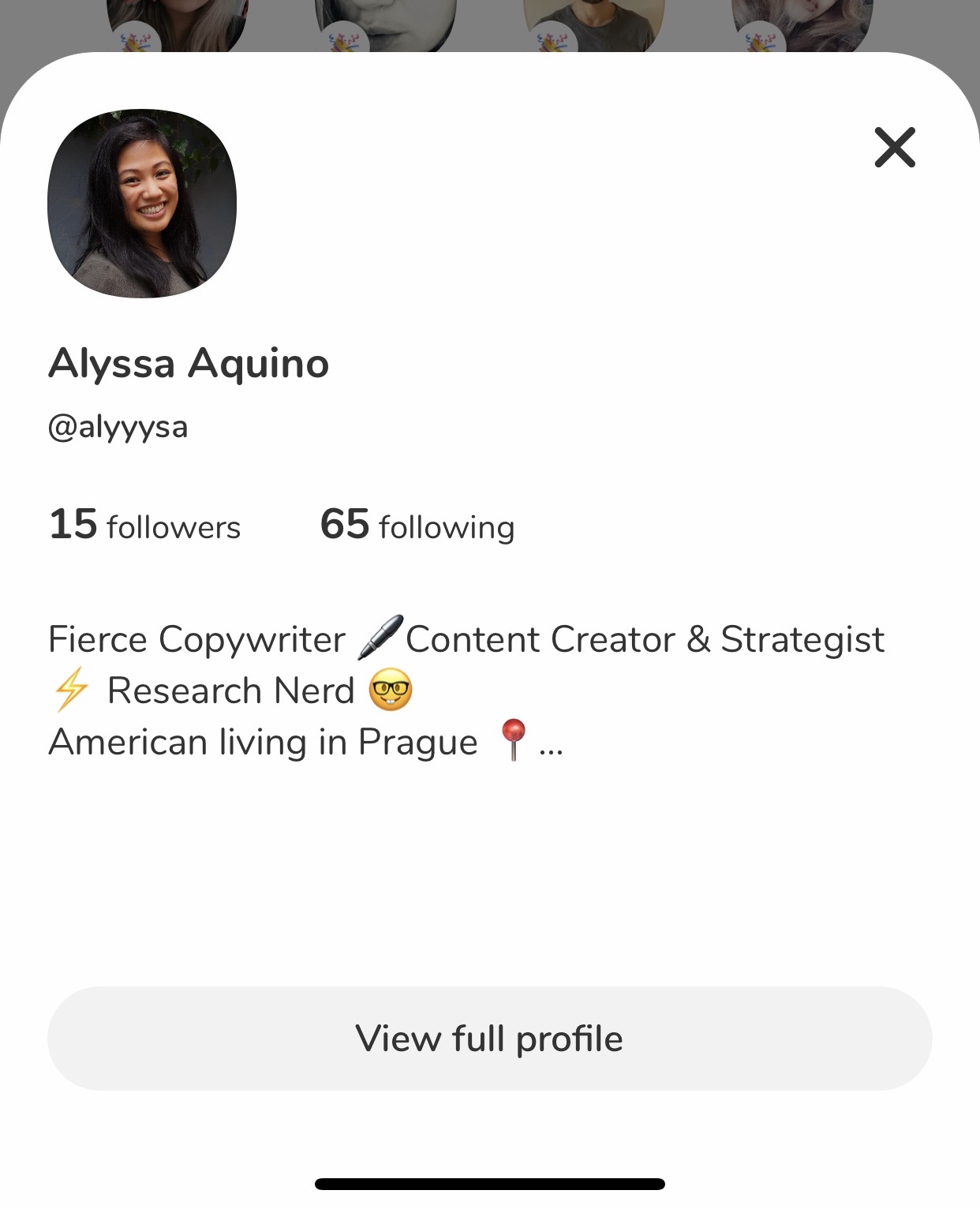
2. Words in your bio are searchable. Sharing a favorite quote from Oprah in your bio? Your profile will show up in the searches when other Oprah fans type in “Oprah.”
3. Emojis are searchable, too. If you type a 🍩 emoji, all bios and names that have a donut emoji will appear in the search.
4. Use your interests as keywords at the end of your bio. This is a great tactic to expand your searchability in Clubhouse.
5. Add a phonetic pronunciation of your name. Have a name that’s difficult to pronounce? Add it in your bio! Great moderators will check your profile to address your name correctly.
6. Bio limit: 2,500 characters, 380 words. You actually have a lot of room to write. Use this extra space to share more about yourself, your philosophy, or business. Keep in mind that you can only use plain text – no hyperlinking, formatting, or tagging.

How to Create a Club in Clubhouse
With any social media platform, it’s always good to have an effective content marketing strategy. On Clubhouse, the best strategy is to create clubs, start discussions, and participate.
Here’s how to create your first club:
When you’re in the main Hallway, simply click on the green button “+ Start a room.”
Add the topic of your room by clicking on “+ Add a Topic” on the top right.
Choose a room type. There are three types of rooms you can create:
Open – This room is open to everyone in Clubhouse. Audience members can ping others to this room.
Social – This room is limited to your followers and it will appear in the Hallway of the people you follow. This is a good way to attract new followers from your current followers.
Closed – This is a private room with an invite-only. This room will not appear in the Hallway.
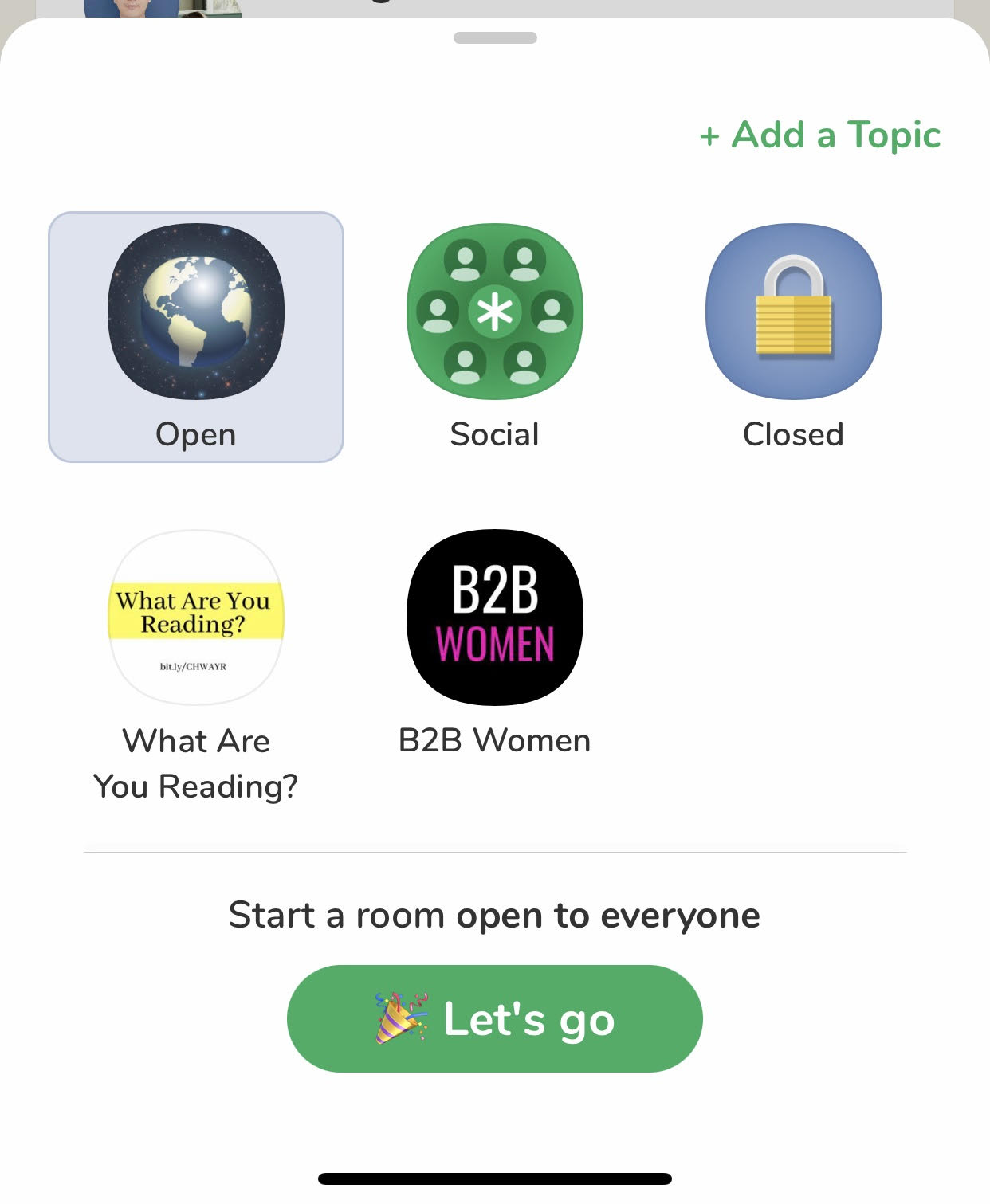
Now, the fun part: content creation. Whatever your topic is, the best way to start is to know your audience, which is one of the nine key qualities of a strong content strategy. What are potential talking points your audience will like to hear? What are some ideas that would like to participate in?
Before getting started, here’s how to get organized:
Create a list of talking points and organize them into an agenda.
Add interactive questions through the discussion. Ask open-ended questions or plan to use PTR.
Have a quick run-through with other moderators before you start. Having a practice run can always help ease the nerves.
More importantly, have fun with it. Clubhouse encourages people to be themselves and to have real conversations. By that, you’d be surprised at the kind of connections you make on the Clubhouse app.
How to Message on Clubhouse
There is no direct messaging on Clubhouse.
The best way to receive direct messages is to connect your Instagram and Twitter accounts. If you’re a moderator, make sure to remind your audience to follow you on Instagram or Twitter so they can connect with you further.
How to Facilitate Engaging Conversations on Clubhouse
Since the launch, Clubhouse has seen extraordinary growth within the platform. However, what comes with great discussions? Heated debates.
Clubhouse has been dealing with multiple incidents that range from harassment to discrimination – and they take community moderation seriously. As a moderator, it’s important that you’re a good facilitator and listener. Having good communication skills can help you create meaningful and engaging conversations.
Here are some tips to maintain authentic and respectful conversations on Clubhouse:
Read the Clubhouse Community Guidelines. You can also find it in any room by clicking on the paper icon at the top right corner.

Be respectful and follow Club rules. Most clubs will list out rules, etiquette, and guidelines for discussions in the Club bio.
If you’re a moderator, set discussion expectations for your audience so it’s clear and concise.
Be aware that some conversations can get out of hand and it could be detrimental to your credibility and brand, especially if your social media accounts are connected to your profiles. Always be prepared to manage a social media crisis.
The Future of Clubhouse
The Clubhouse app has created a brand new social ecosystem that makes it easy for people to connect and be heard. These are real people, around the world, having real conversations about topics they care about and enjoy. Now, will the hype continue?
Yes. And it’s definitely caught the attention of Facebook. The social media giant is building a product to compete with Clubhouse. What’s important here is that Clubhouse encourages authenticity and connection. And it’s something that most people need during such an eventful time. As more and more people engage online, social media platforms need to grow to connect more people in different ways. Stay up to date with the latest social media trends.
Editor's Note: This article was originally published on socialbakers.com. Any statistics or statements included in this article were current at the time of original publication.













